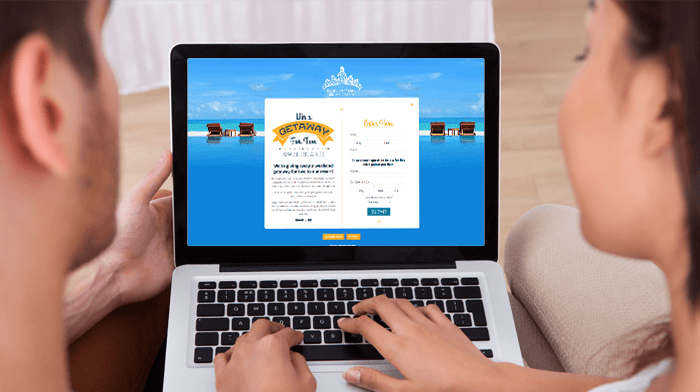Love it or hate it, Facebook is still the predominant social network. With 1.3 billion users (and growing), it’s not going to disappear any time soon.
That said, there’s no reason to make Facebook the hub for all of your social media marketing efforts. In fact, there are plenty of reasons businesses would be wise to diversify and build a social media strategy that isn’t based on “The” social network.
Why? Diversifying gives you more opportunities to reach a different audiences — and ultimately give your business a solid foundation.
Establishing a meaningful presence elsewhere on the web — on other social platforms and on your own website and/or blog—might also reduce some of the frustration you’ve likely been feeling about the reach of your Facebook posts.
So how do you start diversifying?
Think Beyond Facebook
The world may be on Facebook — or at least a sizeable percentage of it — but since Facebook’s algorithm favors posts from actual friends (and family) in the news feed, it’s harder for businesses to establish a foothold.
I’m not suggesting anyone should abandon Facebook, but it needn’t be, and shouldn’t be, anyone’s marketing hub. There are many other social networks businesses can explore.
 Screenshot of Benefit Cosmetic’s Instagram profile taken July 2014
Screenshot of Benefit Cosmetic’s Instagram profile taken July 2014For inspiration, check out what Benefit Cosmetics is up to on Instagram, what Dunkin’ Donuts is doing on Vine and what Whole Foods has cooking on Pinterest.
Focus on Goals, Not Channels
First, figure out your goals. Do you want to build awareness, gather user-generated content, drive traffic to a specific product or your website or blog?
Take some time to figure this out before you build a campaign – then put the campaign where it makes the most sense for your goals.
One of the reasons brands on Facebook have been so frustrated lately is that they got used to having a vibrant page for “free.” But the presence was built on rented land and, as such, was subject to the whims of the landlord, who in this case is Mark Zuckerberg.
Actually, all social networks are rented land, which is why you’re so much better off focusing on your owned sites where you do have control.
Centralize your campaigns on a hub and then use the social platforms as outposts.
Gather Valuable Data You Can Use
Promotions—e.g., contests, coupons, sweepstakes — get lots of attention on Facebook, and generally the highest engagement. And businesses have learned that a well-run Facebook promotion can do a lot more than boost likes.
With campaigns you can learn valuable information about fans for future marketing, build email lists and drive traffic to your website and/or additional products.
If a Facebook promotion can do all of these things for your Facebook fans, why can’t the same promotion do these things for your entire online audience?
Try taking the power of a Facebook promotion and placing the campaign elsewhere on the Web.
This way your audience doesn’t have to go through your Facebook page in order to engage with your brand and you’re not held up by any of Facebook’s guidelines, mobile capabilities, or legal requirements.
Here are the four steps to take in order to start collecting data from all of your followers:
- Build a campaign and host it on the Web. You can use a third-party software to do this.
- Forget about Like-gating. Don’t get too caught up in increasing your Facebook fans. If you have an exciting giveaway and give everyone the chance to enter your contest, they’ll like your Facebook page without being forced to, making them valuable fans. You don’t want fans who like your page just so they can enter your contest and who then unlike you when the promotion is over.
- Link to your campaign from all of your social channels. When you place a campaign on the Web it should have a single URL. Use this URL to promote your campaign on Facebook, Twitter, Google+, Pinterest and your Website.
- Have a follow-up strategy. Whether you collect emails, opinions or geographic information from your followers, have a strategy to further market to those people once the campaign is over.
Consider the Numbers
We recently ran a survey in which we asked page admins if they’d share with us the number of people who “natively” visit their Timeline.
Native visitors are those fans who log into Facebook and choose to navigate to a page’s Timeline in order to read their content or click on their apps. This does not include people who go to a page based on something they saw in the news feed.
The results of the survey? Roughly 3 percent of fans visit a page’s Timeline per month once they’ve liked the page. Ouch! This means 97 percent of fans are only seeing what appears in their news feed when you post.
Bottom line: Very few of your fans see your content in their news feed and even fewer people are seeking out your page. This is yet another reason you’re better off linking to your campaigns from everywhere.
I understand that breaking away from what we know can be difficult, but using the power of the whole to market your business is more powerful than relying on a single network!
The key to being successful on social media is discovering what keys are most important for your business to see success.
I recently re-encountered some great social media advice I had read in Fast Company that said “It’s okay to drive people to your site instead of Facebook’s.” Businesses are quickly learning the benefits of an online campaign versus a single Facebook-centered promotion or Instagram contest.
It is pretty basic — the more people you reach and the more places you put something, the bigger response you’ll get. Businesses need to carry this idea into their social media efforts to see true success.
Photo Credit: ShortStack, author’s company




